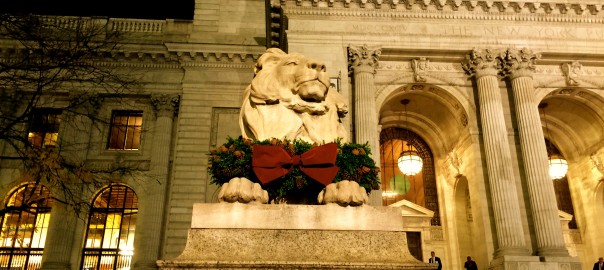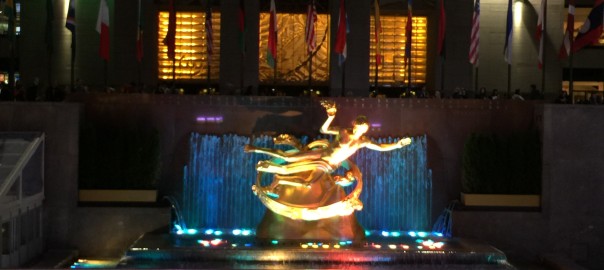Our last post before the end of 2016 is a meaty one.
WHAT BROUGHT WATERSTONE’S BACK FROM THE BRINK?
A great—and optimistic!—article in Slate about how the future of chain bookstores might be shifting, with a focus on the refurbished Waterstone’s.
DESKTOP EMAIL OPEN RATES STILL HIGHER, BUT DECLINING
According to eMarketer, more and more customers—B2B and B2C—are opening emails on mobile devices. So we need to design for that.
“According to the Q2 2015 data, 48% of all emails sent by Experian clients were opened on desktop devices and 40% of emails were opened on mobile phones and ereaders. Some 12% were opened on tablets.”
THE RETURN OF “MAILKIMP”
The second season of Serial means a new round of ads for MailChimp. The ad creative from the first season had Serial listeners eager for the new round of ads (when does *that* happen?), the other two advertisers saw mixed results:
“On Twitter, MailChimp saw an 81 percent spike in mentions from Dec. 9 (the day before the premiere) to Dec. 10. Audible had a 19 percent increase, and mentions for Squarespace actually decreased.”
THE WASHINGTON POST MAKES DIGITAL PROGRESS
Ad Age reports that the investment of time and energy is starting to bear fruit for Jeff Bezos’ Washington Post. Two months after garnering more uniques in a month than the New York Times for the first time ever, the Washington Post is beginning to debut new native advertising units. They are undoubtedly beyond the budgets of book publishers at the moment, but worth watching to see what we might be able to use downstream.
AGAINST IDENTITY
A new study (sponsored by Google, of course, so caveat emptor) suggests that targeting by intent is more effective than targeting by user profile:
“Researchers found that the people actually doing the searching aren’t always who marketers think they are. One example: video games. According to research conducted during the first half of this year, the majority of video-game shoppers are not millennial men. In fact, only 31 percent of mobile users searching for video games were men ages 18 to 24. The target market gets smaller when looking at YouTube demographics, which found that only 29 percent of searches came from men in that age group.”
The article goes on to suggest that this doesn’t mean we should throw demographic information out altogether, but it’s a useful reminder that demographic profiles are not the sum total of anyone.
THE MYTH OF THE EVERYREADER
In a guest post on Jane Friedman’s blog, Rebecca Faith Heyman does us the service of pointing out the benefits of targeting and reminding us that even the biggest “cross-over” titles of recent years (John Green, Suzanne Collins, J. K. Rowling) were written with very specific audiences in mind. Everything started with knowing the audience, and built from there.
(Via Digital Book World Daily)
WHY BOOMERS MATTER
Advertising spends a lot of energy studying the habits of millennials, and as intent readers of advertising news we link to more articles about millennials than any other generation. But it’s worth underlining that boomers are the biggest market for book buyers and should earn an equivalent share of our marketing attention. An article on HubSpot reveals the larger buying power of the Boomer generation in 25 marketing stats. Including the following:
- Baby boomers spend the most across all product categories but are targeted by just 5-10% of marketing. (Source)
- 70% of the disposable income in the U.S. is controlled by baby boomers.(Source)
- Boomers outspend younger adults online 2:1 on a per-capita basis, and they spend more than other generations by an estimated $400 billion a year.
PINTEREST LIMITING AD FOCUS
This article in WSJ reports that Pinterest is pulling back its focus on advertising for all but its top categories: retail and consumer goods.
INTEGRATION OF OUTDOOR AND REAL-TIME ADVERTISING
Canon’s outdoor campaign in NYC is a great example of using creative that shifts in real-time in the “real-life” environment of outdoor. We love this blend of digital capabilities with physical space.
TOP BRANDS EXPERIMENTING WITH PERISCOPE
The movement of corporate marketing attention to Twitter’s Periscope is coming at the expense of Twitter’s Vine (not to mention Meerkat).
ANOTHER BILLIONAIRE DIGITAL GENIUS INVESTS IN PRINT
Alibaba’s Jack Ma buys the South China Morning Post post: another sign (pace Bezos purchasing the Washington Post) that traditional journalism with a healthy mix of significant print presence and fleet digital platforms is seen as valuable by many of the most forward-thinking minds in business.



